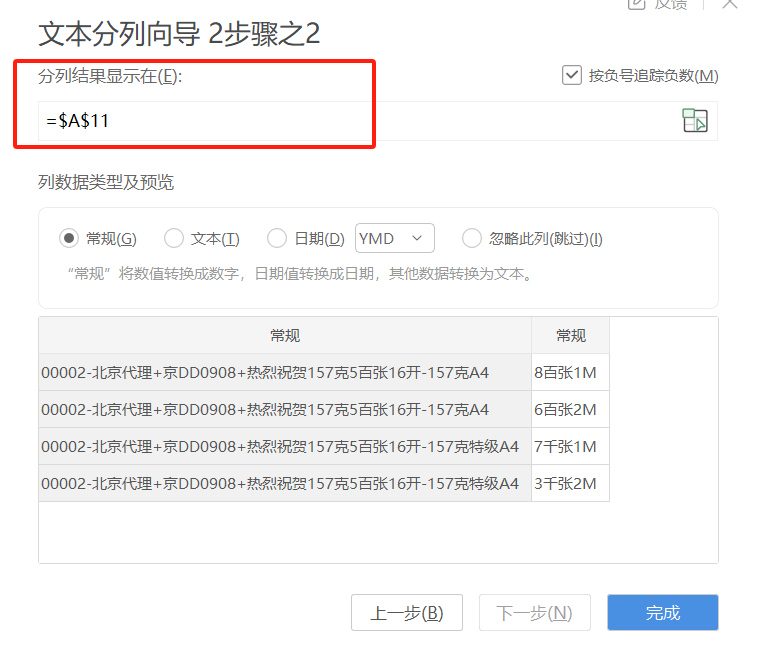一.设备树
(1).流程图

(2).设备树代码

二.驱动代码部分
(1).流程图

(2).驱动代码
#include <linux/types.h>
#include <linux/kernel.h>
#include <linux/delay.h>
#include <linux/ide.h>
#include <linux/init.h>
#include <linux/module.h>
#include <linux/errno.h>
#include <linux/gpio.h>
#include <linux/cdev.h>
#include <linux/device.h>
#include <linux/of_gpio.h>
#include <linux/semaphore.h>
#include <linux/timer.h>
#include <linux/i2c.h>
#include <asm/uaccess.h>
#include <asm/io.h>
#include "oledfont.h"#include <linux/clk.h>
#include <linux/gpio/consumer.h>
#include <linux/pm_runtime.h>
#include <linux/regulator/consumer.h>
#include <linux/sysfs.h>
#include <linux/slab.h>
#include <linux/version.h>#define OLED_CNT 1
#define OLED_NAME "oled"#define OLED_CMD 0X00 //OLED 写命令
#define OLED_DATA 0X40 //OLED 写数据#define Max_Column 128 //OLED 的 x方向的像素个数//IIC从用户控件接收的数据格式
struct display_stru
{int x; //x坐标int y; //y坐标char *buf; //接收数据缓冲区
};/* 设备结构体 */
struct oled_dev
{dev_t devid; /* 设备号 */struct cdev cdev; /* cdev */struct class *class; /* 类 */struct device *device; /* 设备 */struct device_node *nd; /* 设备结点 */int major; /* 主设备号 */void *private_data; /* 私有数据 */
};/* OLED 设备 */
struct oled_dev oleddev;/*** @description: 向 OLED 写入若干个字节的数据* @param - dev : OLED 设备* @param - reg : 寄存器首地址* @param - buf : 要写入的数据缓冲区* @param - len : 要写入的字节数* @return : 成功则返回(发送的 msg 数量),失败则返回(负值) */
static s32 oled_write_regs(struct oled_dev *dev,u8 reg,u8 *buf,int len)
{u8 b[256] = {};struct i2c_msg msg;struct i2c_client *client = (struct i2c_client *)dev->private_data;b[0] = reg; //填充寄存器的首地址memcpy(&b[1],buf,len); //填充要写入的数据msg.addr = client->addr; //OLED 设备msg.buf = b;msg.flags = 0; //表示为写数据msg.len = len + 1; //数据长度 = 1个字节的寄存器首地址 + 要写入的数据长度return i2c_transfer(client->adapter,&msg,1);
}/*** @description: 向 OLED 写入单个字节的数据* @param - dev : OLED 设备* @param - reg : 寄存器首地址* @param - data : 要写入的单个字节的数据* @return : 成功则返回(发送的 msg 数量),失败则返回(负值)*/
static s32 oled_write_reg(struct oled_dev *dev,u8 reg,u8 data)
{u8 buf = data;return oled_write_regs(dev,reg,&buf,1);
}/*** @description: oled 初始化* @param : 无* @return : 无*/
void oled_init(void)
{int ret;u8 i = 0;u8 data[] ={ 0xAE, 0x00, 0x10, 0x40, 0xB0, 0x81, 0xFF, 0xA1, 0xA6,0xA8, 0x3F, 0xC8, 0xD3, 0x00, 0xD5, 0x80, 0xD8, 0x05,0xD9, 0xF1, 0xDA, 0x12, 0xDB, 0x30, 0x8D, 0x14, 0xAF };for(i = 0 ; i < sizeof(data) ; i++){ret = oled_write_reg(&oleddev,OLED_CMD,data[i]);}
}/*** @description: oled 清屏* @param : 无* @return : 无 */
void oled_clear(void)
{u8 i,n;for(i = 0 ; i < 8 ; i++){oled_write_reg(&oleddev,OLED_CMD,0XB0+i); //设置页地址oled_write_reg(&oleddev,OLED_CMD,0x00); //设置显示位置-列低地址oled_write_reg(&oleddev,OLED_CMD,0x10); //设置显示位置-列高地址}for(n = 0 ; n < 128 ; n++){oled_write_reg(&oleddev,OLED_DATA,0x00);}
}/*** @description: 设置 OLED 某个点* @param - x : x坐标* @param - y : y坐标* @return : 无*/
void oled_set_pos(u8 x, u8 y){ oled_write_reg(&oleddev,OLED_CMD, 0xb0 + y);oled_write_reg(&oleddev,OLED_CMD, ((x & 0xf0) >> 4) | 0x10);oled_write_reg(&oleddev,OLED_CMD, x & 0x0f);}/*** @description: oled 显示单个字符* @param - x : x坐标* @param - y : y坐标* @param - chr : 要显示的字符* @return : 无*/
void oled_showchar(u8 x, u8 y, u8 chr){ u8 c=0, i=0;c = chr - ' '; if(x > Max_Column-1){x = 0;y = y + 2;}oled_set_pos(x, y);for(i=0; i<8; i++){oled_write_reg(&oleddev,OLED_DATA, F8X16[c*16+i]);}oled_set_pos(x,y+1);for(i=0; i<8; i++){oled_write_reg(&oleddev,OLED_DATA, F8X16[c*16+i+8]); }}/*** @description: oled显示字符串* @param - x : x坐标* @param - y : y坐标* @param - chr : 字符串首地址* @return : 无*/
void oled_showstring(u8 x, u8 y, u8 *chr){unsigned char j=0;while(chr[j] != '\0'){ oled_showchar(x, y, chr[j]);x += 8;if(x > 120){x = 0;y += 2;}j++;}
}/*** @description: open 函数*/
static int oled_open(struct inode *inode,struct file *filp)
{filp->private_data = &oleddev;/* 初始化 OLED */oled_init();oled_clear();return 0;
}/*** @description: write 函数*/
static ssize_t oled_write(struct file *filp,const char __user *buf,size_t cnt,loff_t *offt)
{/* 可根据用户空间传进来的 buf , 自行编写对应的逻辑实现 */oled_showstring(0,0,"hello");return 0;
}/*** @description: release 函数*/
static int oled_release(struct inode *inode,struct file *filp)
{return 0;
}/* 绑定设备操作函数 */
static const struct file_operations fops =
{.open = oled_open,.write = oled_write,.release = oled_release,
};/*** @description: probe 函数*/
static int oled_probe(struct i2c_client *client,const struct i2c_device_id *id)
{dev_err(oleddev.device,"enter oled_probe\r\n");/* 1.创建设备号 */if(oleddev.major){oleddev.devid = MKDEV(oleddev.major,0);register_chrdev_region(oleddev.devid,OLED_CNT,OLED_NAME);}else{alloc_chrdev_region(&oleddev.devid,0,OLED_CNT,OLED_NAME);oleddev.major = MAJOR(oleddev.devid);}/* 2.注册cdev */cdev_init(&oleddev.cdev,&fops);cdev_add(&oleddev.cdev,oleddev.devid,OLED_CNT);/* 3.创建类 */oleddev.class = class_create(THIS_MODULE,OLED_NAME);if(IS_ERR(oleddev.class)){return PTR_ERR(oleddev.class);}/* 4.创建设备 */oleddev.device = device_create(oleddev.class,NULL,oleddev.devid,NULL,OLED_NAME);if(IS_ERR(oleddev.device)){return PTR_ERR(oleddev.device);}oleddev.private_data = client;return 0;
}/*** @description: remove 函数*/
static int oled_remove(struct i2c_client *client)
{ dev_err(oleddev.device,"enter oled_remove\r\n");/* 1.注销字符设备驱动 */cdev_del(&oleddev.cdev);unregister_chrdev_region(oleddev.devid,OLED_CNT);/* 2.注销类和设备 */device_destroy(oleddev.class,oleddev.devid);class_destroy(oleddev.class);return 0;
}/* 无设备树时的匹配方式 - ID列表 */
static const struct i2c_device_id oled_id[] =
{{"oled_test",0},{},
};/* 设备树下的匹配方式 - 匹配列表 */
static const struct of_device_id oled_of_match[] =
{{.compatible = "oled_test"},{},
};/* i2c 驱动结构体 */
static struct i2c_driver oled_driver =
{.probe = oled_probe,.remove = oled_remove,.driver = {.owner = THIS_MODULE,.name = "oled",.of_match_table = oled_of_match,},.id_table = oled_id,
};/*** @description: 驱动入口函数*/
static int __init oled_module_init(void)
{return i2c_add_driver(&oled_driver);
}/*** @description: 驱动出口函数*/
static void __exit oled_module_exit(void)
{i2c_del_driver(&oled_driver);
}module_init(oled_module_init);
module_exit(oled_module_exit);
MODULE_LICENSE("GPL");
MODULE_AUTHOR("kaneki");






![[JAVA]MyBatis框架—获取SqlSession对象](https://i-blog.csdnimg.cn/direct/1b1ddf3a840f40fe8c1bf2d523a014a6.png)


